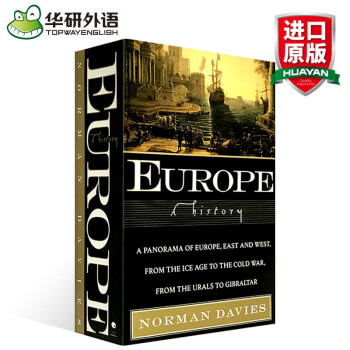

具体描述
书名:Europe: A History 欧洲史
作者:Norman Davies诺曼·戴维斯
出版社名称:Harper Perennial
出版时间:1998
语种:英文
ISBN:9780060974688
商品尺寸:15.6 x 5.8 x 23.5 cm
包装:平装
页数:1392
Europe: A History《欧洲史》是一部从冰河时代延伸到原子时代的历史类精品著作,作者是牛津大学教授诺曼?戴维斯。作者选取了欧洲大陆经历过的十个极具理想的历史时期作为本书的时间主线,讲述了史前时期到第二次世界大战,以及二战至本书出版当年为止的整个欧洲历史。本书为英文版,适合有一定英文基础的历史学习者或爱好者阅读。
推荐理由:
1.首部给予欧洲东部和欧洲西部同等分量的欧洲史,值得历史爱好者一读;
2.以时间为主线由快到慢推进,覆盖了史前时期到第二次世界大战期间的历史;
3.欧洲历史、文化、社会生活从史前到当代的百科全书,融性和可读性于一体;
4. 英文原版,书内包括100幅地图、图表及多张插图,图例仔细清晰。
WithEurope: A History, University of London professor Norman Davies has undertaken the near impossible: a synthetic one-volume overview of Europe from prehistory through the present. Remarkably, he has succeeded.Europe: A History is a conventional narrative, proceeding forward in time at a gradually decelerating pace. (The beginning covers millions of years of prehistory, while the final chapter discusses the 46 years between World War II and the book’s publication.) But Davies’s writing—vigorous, incisive, and confidently knowledgeable—carries the reader along, while the steady sweep of the main narrative is broken up by “capsules,” boxed passages examining particular places, customs, or issues that cut across chronological lines. Davies, who has written two books on Polish history, also gives the eastern part of Europe its due coverage, unlike many of his predecessors, and manages to include commoners and the persecuted or ignored in his story along with the mighty and the royal.Europe: A History won’t please everybody, but it’s a highly intelligent, superbly readable overview that is certain to become a standard text.
Review
“Books of real quality and importance are rare. Norman Davies’ history of Europe is one of them. It is a brilliant achievement, written with intelligence, lucidity and a breathtaking width of knowledge... This is a book everyone should read.” — A. C. Grayling,Financial Times
“A noble monument of scholarship, and all the more noble because it is so full of surprise and feeling... There are superb assessments of vastly daunting subjects.” —Jan Morris,Independent
“Monumental, authoritative... A book for enquiring minds of all ages, it will answer hundreds of enquires and provoke thousands more.” —Noel Malcolm,Sunday Telegraph
“No history of Europe in the English language has been so even-handed in its treatment of east and west... Strong characterisation, vivid detail, trenchant opinions, cogent anaylsis all make this tremendous reading.”—Times Literary Supplement
Europe: A History《欧洲史》是一部从冰河时代延伸到原子时代的历史类精品著作,为欧洲历史设计出一种时间和空间的坐标系统,表现出一种难得一见的整体史印象。本书以时间为主线由快到慢逐渐推进,第1章覆盖了长达百万年的史前时期,而在末尾一章讨论了第二次世界大战至本书出版当年为止的46年间的历史。
诺曼·戴维斯捕获了所有的历史事件:罗马的崛起与衰落,阿拉里克人和阿蒂拉人的大举侵略,诺曼征服,罗马教廷的权力斗争,文艺复兴和改革,法国大革命和拿破仑战争,欧洲崛起为世界权力中心以及它因陷入两次毁灭性的世界大战而走向衰落。这是首部给予欧洲东部和欧洲西部同等分量的欧洲史。
《欧洲史》的独特之处在于对内容的选择、重新安排和表现方式,它把传统的叙述体与独特的特写结合在一起,使鲜活的历史事件和人物跃然纸上:299个讲述各个时代方方面面的“概要介绍”(知识窗)散步于整部书,介绍的傗题跨越了各章的界限,描绘了各种奇特的事物和思想,这些通常是过于严肃的历史学家们忽略的;12幅“快照”从很好的视点俯瞰了某一特定历史时期欧洲的全景,如同对时间推进和领土扩张的迅猛进程叫一声暂停,帮助读者松一口气并审视这些重大历史变革,并如棱镜折射出欧洲历史丰富多样的变化;100幅地图和图表、72幅图片覆盖了整个欧洲的历史。所有这些说明,戴维斯的《欧洲史》是近几年出版的极具价值、有说服力的历史读物之一。
作者在牛津大学完成了本书的大部分内容,参考了牛津大学图书馆丰富而古老的资料,同时也得到了哈佛大学乌克兰语研究所和维也纳人文科学研究所的帮助。
Here is a masterpiece of historical narrative that stretches from the Ice Age to the Atomic Age, as it tells the story of Europe, East and West. Norman Davies captures it all-the rise and fall of Rome, the sweeping invasions of Alaric and Atilla, the Norman Conquests, the Papal struggles for power, the Renaissance and the Reformation, the French Revolution and the Napoleonic Wars, Europe’s rise to become the powerhouse of the world, and its eclipse in our own century, following two devastating World Wars. This is the first major history of Europe to give equal weight to both East and West, and it shines light on fascinating minority communities, from heretics and lepers to Gypsies, Jews, and Muslims. It also takes an innovative approach, combining traditional narrative with unique features that help bring history alive: 299 time capsules scattered through the narrative capture telling aspects of an era. 12 -snapshots offer a panoramic look at all of Europe at a particular moment in history. Full coverage of Eastern Europe—100 maps and diagrams, 72 black-and-white plates. All told, Davies’sEurope represents one of the most important and illuminating histories to be published in recent years.
诺曼·戴维斯,1939年生于英格兰。曾获波兰克拉科夫大学博士学位,原伦敦大学东欧斯拉夫学院教授,在伦敦大学执教多年,主要研究方向为中欧与东欧史。现任午津大学沃尔夫森学院研究员、教授。
主要著作:
《起义在1944年:华沙之战》(Rising, 44: The Battle for Warsaw),被《纽约时报》评为2004年度100本书之一。
《上帝的操场:波兰史》(God’s Playground: A History of Poland)
《欧洲的心脏:与波兰当代有关的历史》(Heart of Europe: The Past in Poland’s Present)
《不列颠群岛:一部历史》(The Isles: A History)
《微观世界:一个中欧城市的肖像》(Microcosm: Portrait of a Central Euronean City)
Norman Davies C. M. G., F. B. A. is Professor Emeritus of the University of London, a Supernumerary Fellow of Wolfson College, Oxford, and the author of several books on Polish and European history, includingGod’s Playground,White Eagle,Red Star, The Isles,MicrocosmandEurope: East and West.
Preface
The Legend of Europa
Introduction
I. Peninsula: Environment and Prehistory
II. Hellas: Ancient Greece
III. Roma: Ancient Rome, 753 BC–AD 337
IV. Origo: The Birth of Europe, AD c. 330–800
V. Medium: The Middle Age, c. 750–1270
VI. Pestis: Christendom in Crisis, c. 1250–1493
VII. Renatio: Renaissances and Reformations, c. 1450–1670
VIII. Lumen: Enlightenment and Absolutism, c. 1650–1789
IX. Revolutio: A Continent in Turmoil, c. 1770–1815
X. Dynamo: Powerhouse of the World, 1815–1914
XI. Tenebrae: Europe in Eclipse, 1914–1945
XII. Divisa et Indivisa: Europe Divided and Undivided, 1945–1991
Notes to Chapters
Notes to Capsules
AppendixI. List of Capsules
AppendixII. Notes on Plates and Acknowledgments
Appendix III. Historical Compendium
Index
序言
欧罗巴的传说
导言
第1章 半岛:环境与史前时期
第2章 希腊:古代希腊
第3章 罗马:古代罗马,公元前753—公元337年
第4章 起点:欧洲的诞生,约公元330—800年
第5章 中世纪:中世纪,约750—1270年
第6章 危机:危机中的基督教世界,约1250—1493年
第7章 再生:文艺复兴和宗教改革,约1450—1670年
第8章 启蒙:启蒙运动与专制主义,约1650—1789年
第9章 革命:动乱的大陆,约1770—1815年
第10章 动力:世界的发电站,1815—1914年
第11章 熄灯礼拜:阴影笼罩下的欧洲,1914—1945年
第12章 分裂和统一:欧洲的分裂和统一,1945—1991年
附录一各章注释
附录二“概要介绍”注释
附录三“概要介绍”一览表
附录四图片鸣谢说明
附录五历史图解简编
附录六重要人物、事件、机构、地点等的索引
THERE is a marked determinism about many descriptions of Europe’s environmental history. Many Europeans have assumed that their “continent” was so magnificently endowed that it was destined by Nature for world supremacy. And many have imagined that Europe’s good fortune would somehow last forever. “The empire of climate”, wrote Montesquieu in 1748, “is the first of all empires”; and he proceeded to show that the European climate had no rival. For Montesquieu, as for his many successors, Europe was synonymous with Progress.
There has also been a good deal of national parochialism. Even the founder of human geography, the great Paul Vidal de la Blache (1845–1918), one of the intellectual ancestors of the Anuales school, was not above a touch of Gallic chauvinizing. The geography of France, he stressed, was marked by the keynote of variety. “Against the diversities which assail her”, he wrote, “France sets her force d’assimilation, her power of assimilation. She transforms everything that she receives.” On Britain, in contrast, he quotes the doggerel lines about “this paltry little isle, I with acres few and weather vile”. One hundred years later one finds Fernand Braudel doing similar things. Variety is indeed a characteristic of France’s superb make-up. But it is not a French monopoly, it is a hallmark of Europe as a whole.
In fact, the Peninsula of Europe is not really a “continent” at all: it is not a self-contained land mass. At c.10 million km2 (3.6 million square miles), it is less than one-quarter the size of Asia, one-third of Africa, one-half of each of the Americas. Modern geographers classify it, like India, as a subcontinent of Eurasia: “a cape of the old continent, a western appendix of Asia”. Even so, it is impossible to deny that Europe has been endowed with a formidable repertoire of physical features. Europe’s landforms, climate, geology, and fauna have combined to produce a benign environment that is essential to an understanding of its development.
Europe’s landforms do not resemble those of any other continent or sub-continent. The depressions to north and south have been flooded by the ocean to form two parallel sea-chains which penetrate deep into the interior. In the north, the North Sea-Baltic sea lane stretches 1,500 miles (2,500 km) from the Atlantic to Russia. In the south, the Mediterranean-Black Sea system stretches over 2,400 miles (4,000 km) from Gibraltar to the Caucasus. Within these protected seas lie a vast complex of lesser gulfs and a huge spangle of islands. As a result, the ratio of shoreline to landmass is exceptionally high: at c.37,000 km, or more than 23,000 miles, the European shoreline is almost exactly the length of the Equator. For early Man, this was perhaps the most important measure of accessibility.
What is more, since the shores of the Peninsula lie in the temperate latitudes of Eurasia’s western extremity, they are served by a user-friendly climate. Prevailing ocean winds blow westerly; and it is the western coasts of the great continents that stand to benefit most from the moderating influx of sea air. Yet few other west-facing continental coasts can actually enjoy the advantage. Elsewhere, if the western shore is not blocked by towering peaks or icy currents, it is lined by deserts such as the Sahara, the Kalahari, or the Atacama.
The climate of Europe, therefore, is unusually temperate for its latitude. Generally speaking, under the influence of the Gulf Stream, northern Europe is mild and moist; southern Europe is relatively warm, dry, and sunny. Central and eastern Europe enjoy elements of a true continental climate, with clear, cold winters and baking hot summers. But everywhere the weather is changeable. Extremes are usually avoided. Even in European Russia, where the difference between the mean temperatures of January and July can approach 45°C, the range is only half what it is in Siberia. The wettest district in Europe is in western Norway, with an average annual precipitation of 3,500 mm (138 inches). The dryest district surrounds the Caspian Sea, with less than 250 mm ( inches) per annum. The coldest spot is Vorkuta, with a mean January chill of -20 °C; the hottest is disputed between Seville and Astrakhan, both with mean July roasts of +29 °C. These extremes do not compare with their counterparts in Asia, Africa, or the Americas.
Europe’s temperate climate favoured the requirements of primitive agriculture. Most of the Peninsula lies within the natural zone of cultivable grasses. There were abundant woodlands to provide fuel and shelter. Upland pasture often occurs in close proximity to fertile valleys. In the west and south, livestock can winter in the open. Local conditions frequently encouraged special adaptations. The extensive coastline, combined with the broad Continental Shelf, gave fishermen rich rewards. The open plains, especially of the Danube Basin, preserved the nomadic horse-rearing and cattle-driving of the Eurasian steppes. In the Alps -- which take their name from the high pastures above the tree-line -- transhumance has been practised from an early date.
Europe’s climate was probably also responsible for the prevalent skin-colour of its human fauna. Moderate levels of sunshine, and hence of ultra-violet radiation, meant that moderate levels of pigmentation came to be encoded in the Peninsula’s gene pool. Certainly, in historic times pale faces have predominated, together with blond or golden hair and blue eyes in the northern regions. The great majority of Europeans and their descendants can be easily recognized as such from their looks.
Until recently, of course, it was impossible to take anything but the most superficial racial factors into consideration. The analysis of blood groups, body tissues, and DNA imprints, for example, was unknown until the late twentieth century; and it was not realized just how much genetic material all human beings have in common. As a result, racial theorists were apt to draw conclusions from external criteria such as skin colour, stature, or skull form. In reality, the racial make-up of Europe’s population has always displayed considerable variety. The tall, blue-eyed, fair-skinned, platinum blonds of the so-called “Nordic race” which established itself in Scandinavia forms the only group remotely qualified for the label of “white”. They bore little resemblance to the squat, brown-eyed, swarthy-skinned and black-haired people of the so-called “Mediterranean” or “Indo-Mediterranean Race” which dominated large parts of the south…
用户评价
我必须承认,一开始我对如此宏大叙事的历史著作抱持着一种敬而远之的态度,担心内容会过于庞杂,难以消化。然而,这本书的结构设计巧妙地化解了这种压力。它并非采用简单的编年体,而是巧妙地运用了主题式的划分和区域性的对比,使得整个欧洲历史的脉络得以清晰地呈现,如同复杂的交响乐有了明确的分段和主题回归。作者的高明之处在于,他总能在大局观和微观视角之间流畅地切换,比如,在前一页还在分析查理曼帝国鼎盛时期的行政管理模式,紧接着的下一页就可能聚焦于某个中世纪小镇的日常贸易摩擦,这种“大景深”的镜头语言,让历史的立体感大大增强。这种结构上的匠心,让读者在跟随作者的思路深入挖掘某个特定时期或议题时,永远不会迷失方向,总能清晰地知道当前讨论的节点在整个欧洲图景中的位置。这种层次感和逻辑上的严谨性,是真正构建起一座坚实历史殿堂的基石。
评分翻开这本厚重的历史著作,立刻被那种扑面而来的史诗感所震撼。它不仅仅是简单地罗列事实和时间线,更像是一幅由无数细微笔触精心描绘的宏大壁画。作者的叙事功力着实令人叹服,他总能找到那个恰到好处的切入点,将那些看似枯燥的政治变动、经济转型,乃至社会思潮的演变,串联成一条条清晰而富有张力的故事线。尤其是在探讨不同文明冲突与融合的章节,那种辩证的眼光和对复杂性的深刻洞察力,让人不得不停下来反复咀嚼。我尤其欣赏作者处理细节的方式,他不会淹没在浩如烟海的史料中,而是像一个高明的导演,知道何时该聚焦于某一个关键人物的内心挣扎,何时该拉远镜头,展现时代洪流的不可抗拒。读完某个篇章,脑海中浮现的不是一堆需要背诵的知识点,而是一个个鲜活的场景和一群在特定历史语境下做出艰难抉择的人们。这种代入感和对历史深层逻辑的挖掘,远远超出了我对于传统教科书式的历史解读的预期。它迫使我重新审视自己对“欧洲”这个概念的理解,认识到它的多元性、内在的矛盾性以及其持续演进的动态过程。
评分这本书的文字风格实在是太“有味道”了,简直像是在聆听一位学识渊博的老教授在壁炉旁,用他那略带沙哑却充满激情的嗓音娓娓道来。它没有那种冷冰冰的学术腔调,反而充满了作者对历史的深沉关怀与批判性反思。有些段落的措辞精妙,充满了文学性的张力,让人在阅读时仿佛能感受到作者在斟酌每一个词语时所耗费的心力。例如,在描述某个转折点时,作者选择了一种近乎诗意的语言,将冰冷的年代数字赋予了温度和情感。这种叙事上的“人情味”使得即便是对于那些我原本认为索然无味的制度沿革,也能读出其中蕴含的人性挣扎与理想抱负。它教会我的不仅仅是“发生了什么”,更重要的是“为什么会这样发生”,以及“在这种环境下,人们是如何思考和感受的”。坦白说,我很少在历史书中读到如此强烈的“作者在场感”,他既是冷静的观察者,又是深情的参与者,这种微妙的平衡掌握得炉火纯青,极大地提升了阅读体验的质量,让原本可能枯燥的阅读过程变成了一种享受。
评分从装帧和印刷质量来看,这本书无疑是值得珍藏的。纸张的选择很有分量,拿在手中有一种踏实的历史沉淀感,这对于一本厚重的历史书来说至关重要,它暗示了内容的厚度和严肃性。我尤其欣赏其配图和地图的质量,它们绝非可有可无的点缀,而是深度融入文本的有机组成部分。那些精细绘制的古代疆域图,或是描绘贸易路线的示意图,都极大地辅助了读者对地理因素如何塑造历史进程的理解。在许多关键的历史转折点,一张清晰的地图往往胜过千言万语的文字描述。正版的质量保障,确保了文字的清晰度和排版的舒适度,长时间阅读下来也不会感到视觉疲劳。对于致力于深入研究或仅仅是想拥有一个可靠参考资料的读者来说,选择一本制作精良的版本,是对自己阅读投入的一种尊重,也是对作者智慧结晶的一种致敬。
评分读完之后,我最大的感受是知识的“重塑”而非简单的“增加”。很多我过去在其他地方零散了解到的事件和人物,在这本书中得到了一个统一而有力的解释框架。作者似乎有一种魔力,可以将那些分散的历史碎片,用一种极富洞察力的方式重新黏合起来,揭示出隐藏在表象之下的深层联系。特别是作者在讨论启蒙运动与随后的革命浪潮时,那种对思想传播路径和知识精英角色的分析,让人耳目一新,提供了不同于传统政治史的解读角度。这本书不是在向你兜售标准答案,而是在为你提供一套分析历史问题的工具箱。它鼓励读者去质疑既有的叙事,去寻找那些被主流历史叙事所忽略的边缘声音和复杂因素。这种批判性的思维训练,远比记住某个日期或条约名称来得更为宝贵,它潜移默化地改变了我看待当前世界格局和文化差异的视角。
相关图书
本站所有内容均为互联网搜索引擎提供的公开搜索信息,本站不存储任何数据与内容,任何内容与数据均与本站无关,如有需要请联系相关搜索引擎包括但不限于百度,google,bing,sogou 等
© 2025 book.coffeedeals.club All Rights Reserved. 静流书站 版权所有




![英文原版 Leslie Patricelli 行为习惯4册合售 [0~5岁] pdf epub mobi 电子书 下载](https://pic.windowsfront.com/24134222298/5a52e362Nad591a71.jpg)
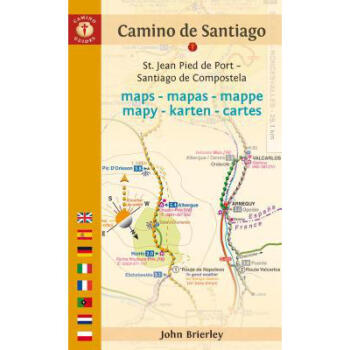


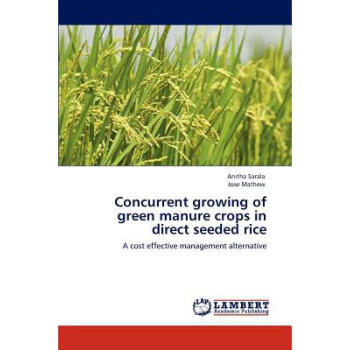
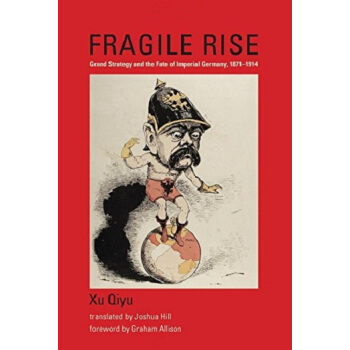

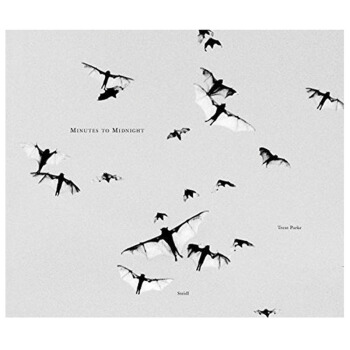

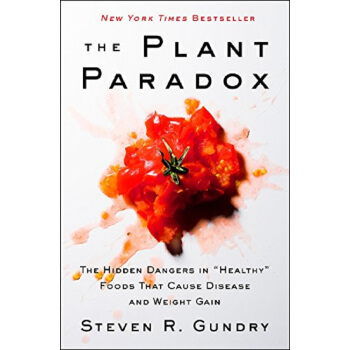
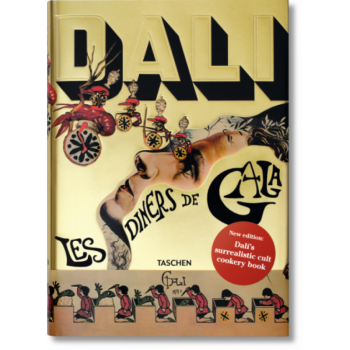
![英文原版 Amelia 阿米莉亚贝迪利亚(童年)9册 [4-8岁] pdf epub mobi 电子书 下载](https://pic.windowsfront.com/25468488081/5a77fc35N723d88ca.jpg)




